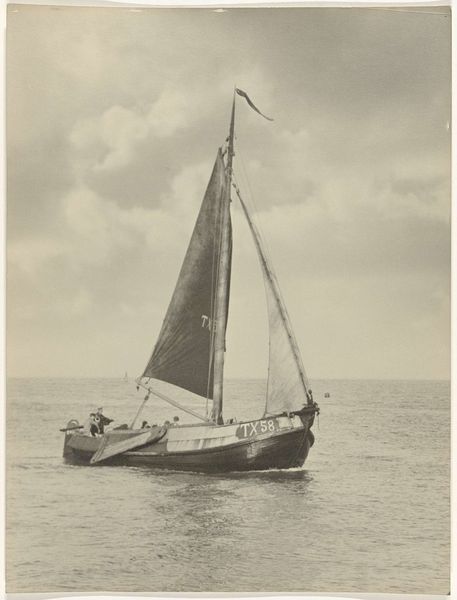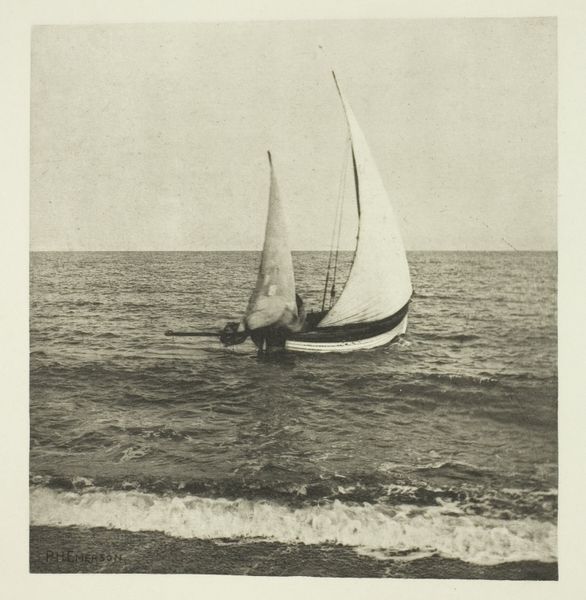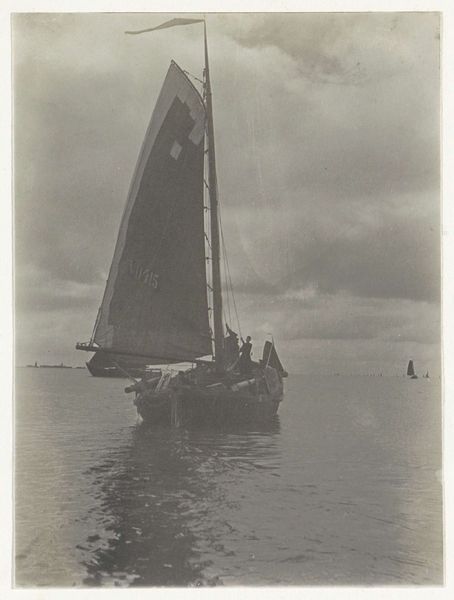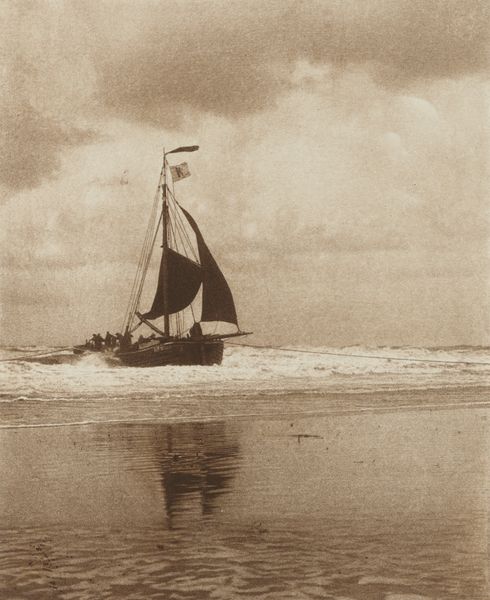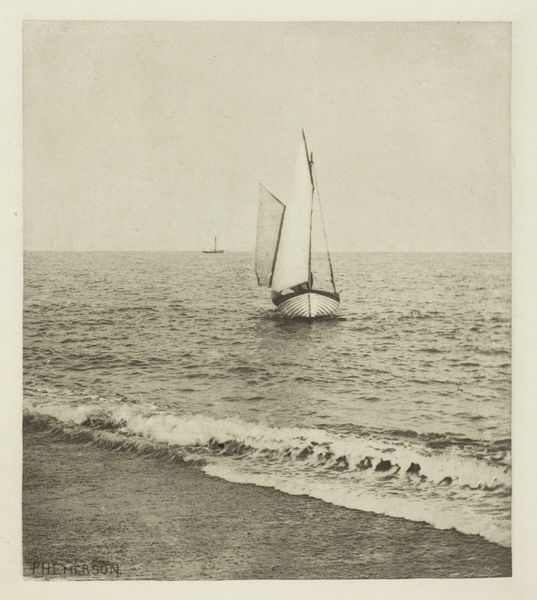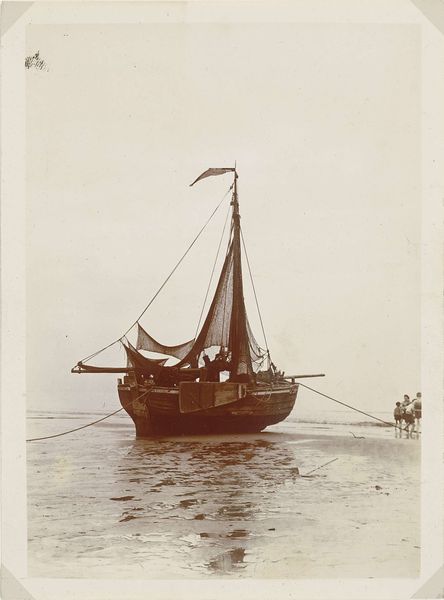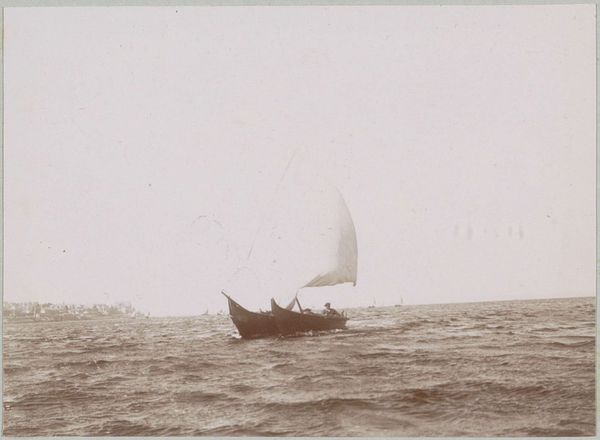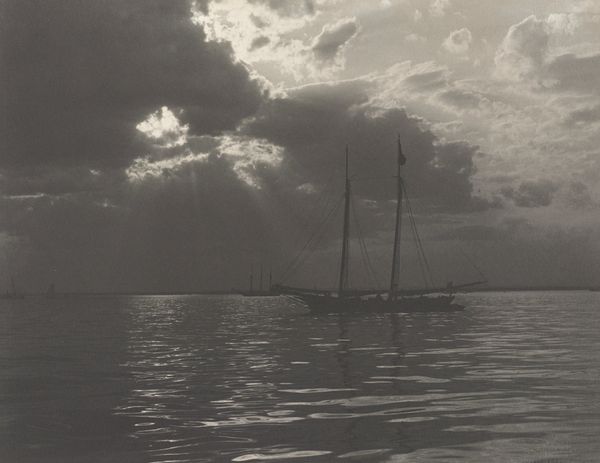
Dimensions: height 7.5 cm, width 5.5 cm
Copyright: Rijks Museum: Open Domain
Curator: Here we have "Zeilschip op zee," a gelatin-silver print of unknown authorship, believed to be from around 1940-1945. It resides here at the Rijksmuseum. Editor: Immediately, I feel a sense of solitary resilience emanating from this monochrome image. The lone sailboat battling the turbulent sea creates a strong visual metaphor for the struggles of the human spirit during those war years. Curator: It’s a compelling visual, isn’t it? Consider the symbolic weight of the ship itself – a vessel, a carrier of hope and perhaps escape amidst a dark period. The sail, sharply angled, captures a sense of urgency, almost as though it's desperately trying to navigate through adversity. Editor: Absolutely. And the fact that it's a monochrome print enhances that sense of starkness. It reminds me of the pervasive anxieties during that time—uncertainty, displacement, loss of safe harbors. The unknown photographer captures not just a seascape but the collective psyche. Curator: It certainly evokes that sense of uncertainty. Visually, the contrast between the dark sails and the churning sea is rather striking, reflecting the turmoil of those times. One can almost feel the isolation through the image. The composition directs our gaze right along with the vessel towards an unknown, uncertain future. Editor: Which begs the question: for whom? Given that photographic technology was more democratized by this point, who could this sailor represent? Everyday Dutch citizens facing occupation and collaboration? And to what extent might the iconography of boats reference colonial exploitation? The photo becomes a charged question, rather than a simple document. Curator: That adds a vital dimension to it. By seeing it from a cultural perspective, we're not just witnessing a lone ship; we're engaging with layered experiences, from national anxieties to post-colonial readings of sailing imagery, with each viewing enriching and deepening our experience of this picture. Editor: Yes, and even within its aesthetic of high contrast and sharp focus, one is forced to ponder: to what extent did the aesthetic language available limit the narratives of everyday citizens in wartime, and to what extent might this photographer be undermining them? Thanks for unpacking its many potential implications with me. Curator: Likewise; discussing how the photographer captured and potentially subverted social tensions provides so much enriching depth beyond just viewing technique.
Comments
No comments
Be the first to comment and join the conversation on the ultimate creative platform.
